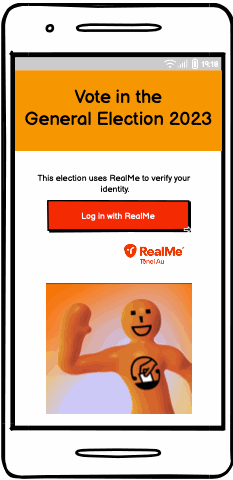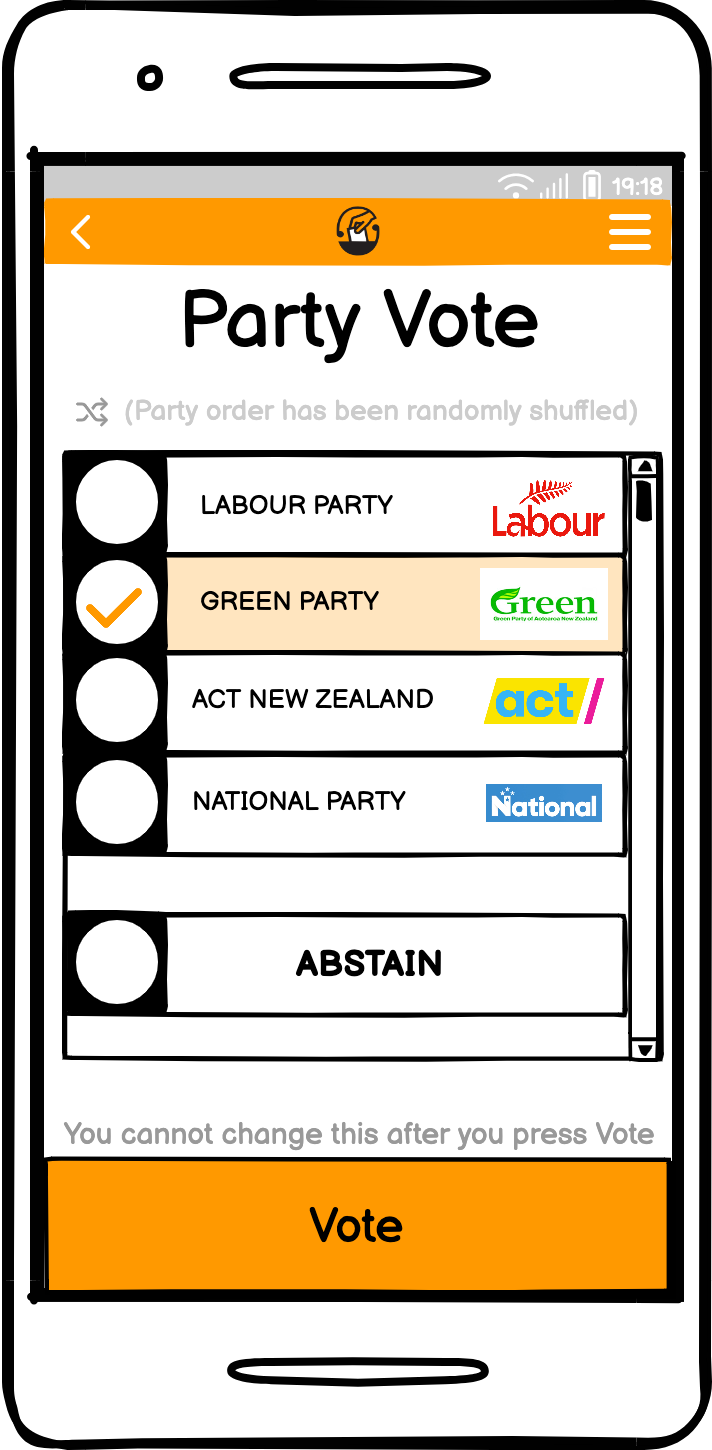User Experience Mockup for Elections

Introduction
The brief was to design an easy-to-use interface for a voting app. The app would be used by people who are not tech-savvy, so the interface needed to be simple and intuitive.

I used Balsamiq to create the mockup in the above images. I came up with a clear and easy-to-use interface that behaves just as the user expects and if implemented, would allow users to vote quickly and easily.
Brief
You are part of a software development team tasked with developing an online e-voting system for the Electoral Commission of Aotearoa New Zealand. Your role on the software development team is to model, prototype and design an evaluation for the system’s proposed user interface. Other members in your software development team will be responsible for implementing the system and for actually running the evaluation.
You are to create a wireframing model to prototype a user interface for the system that meets the needs of the two personas that you have created and meets the basic functionality listed in the Requirements section below.
Requirements
- Voting can take place over a two-week period, which is decided in advance by the current government.
- A voter can vote for their preferred candidate in an electorate.
- A voter can vote for their preferred party.
- A voter can vote either “Yes”, “No” or “Abstain” in all referenda questions that are active in an election.
- The system can be configured with a set of electorates.
- The system can be configured with a set of candidates for each electorate.
- There should be no bias towards any candidate or party in the order in which they are presented.
- The system can be configured with a set of parties. A party, once registered, is available for voting in all electorates for the party vote.
- A Māori voter can choose to register in their local Māori electorate or their local General electorate.
- A non-Māori voter can choose to register in their local General electorate. The system shows a count of the votes for each electorate, once voting has closed. This count shows how many votes each candidate got and how many votes each party got for each electorate, as well as how many votes each party got across the entire country.
Further Information
- A party has a party logo, a party name, and a link to the party’s website.
- A candidate has a party logo (or “I” for “independent”), a name, and a link to their own website.
- A voter has an address, a name, an age and an ethnicity and a unique ID.
- Only people who are citizens or permanent residents of Aotearoa New Zealand and who are 18 years or older on the final day of the election, and who have lived in New Zealand for at least 12 months during their life, are eligible to vote in an election.
- There are 7 Māori Electorates and 65 General Electorates in Aotearoa New Zealand. The remaining 48 seats in the 120-seat Parliament are allocated to Parties so that their share of Parliament equals the same as their share of the party vote.